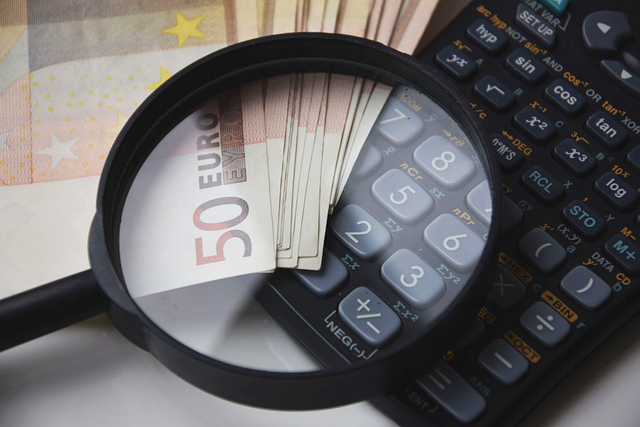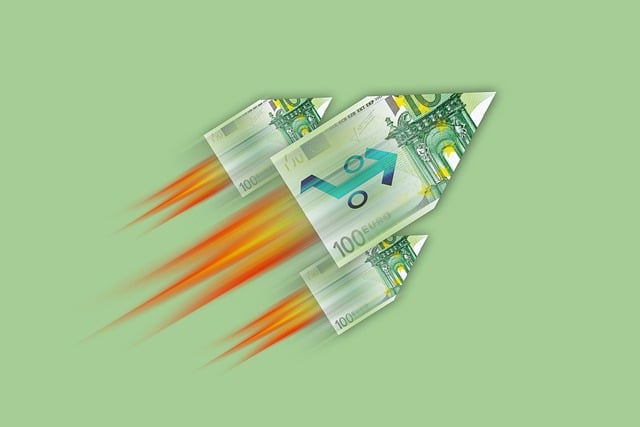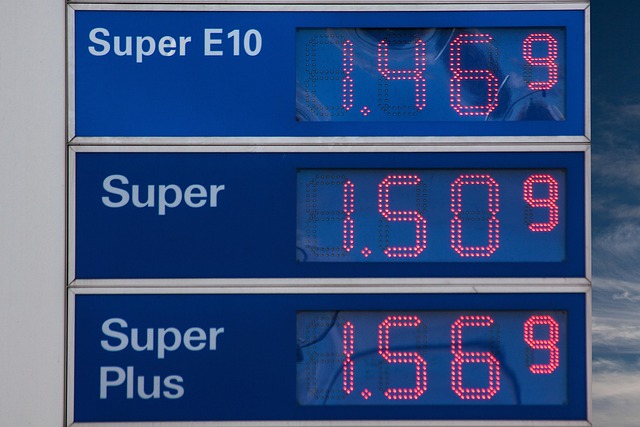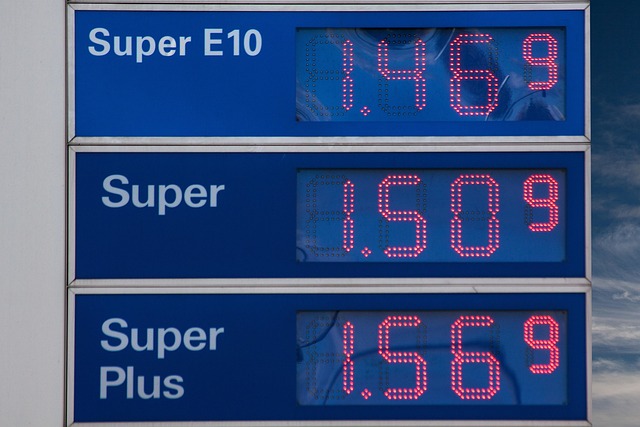How Does XRP Price Increase: Key Drivers
Author: Jameson Richman Expert
Published On: 2025-10-22
Prepared by Jameson Richman and our team of experts with over a decade of experience in cryptocurrency and digital asset analysis. Learn more about us.
How does XRP price increase is a question traders, long-term investors, and payments industry observers ask repeatedly. This article summarizes the primary mechanisms that push XRP’s price higher — from supply and demand dynamics and Ripple-specific developments to market structure, macro forces, and on-chain signals — and gives actionable ways to track and respond to those drivers.

Quick overview: what this article covers
You’ll learn the major factors that cause XRP price appreciation, practical indicators to watch, real-world examples, and trading/investment strategies. We’ll explain supply dynamics (escrow releases, circulating supply), demand catalysts (adoption for cross-border liquidity, exchange listings), market mechanics (order book, liquidity, whales, OTC), regulatory news (SEC litigation outcomes), on-chain metrics, macro correlations (BTC, liquidity), and risk management. Where relevant, we link to high-authority sources and trading resources to help you act on the information.
Why understanding "how does XRP price increase" matters
Unlike some assets where price moves are purely speculative, XRP operates in a unique environment: it’s tied to a payment-oriented ledger (the XRP Ledger), has a large pre-mined supply, and is promoted by a company (Ripple) whose business moves matter. Understanding the drivers helps investors differentiate temporary pumps from sustainable appreciation.
Primary drivers that make XRP price increase
1. Supply dynamics — escrow releases and circulating supply
XRP was pre-mined with a maximum supply of 100 billion tokens. Ripple initially placed a large portion of its holdings into an escrow with scheduled monthly releases. Key supply-related factors that can push price up:
- Reduced net selling by Ripple: If Ripple announces it will not sell released escrow XRP or slows sales, the market perceives less future selling pressure.
- Lower circulating supply growth: Permanent removal of tokens (XRP transaction fees are destroyed in tiny amounts) or fewer tokens entering exchanges reduces available sell-side liquidity.
- Large token buys or lockups: Institutional or strategic purchases that move tokens off exchanges tighten supply.
Watch Ripple’s escrow unlock statements, large wallet transfers, and exchange inflows/outflows. For ledger-specific data, refer to the XRP Ledger (XRPL) documentation at xrpl.org and the XRP Wikipedia entry for background: XRP (Wikipedia).
2. Increase in real-world utility and demand (On-Demand Liquidity)
The primary fundamental argument for XRP price increases is adoption as a bridge currency for cross-border payments via Ripple’s On-Demand Liquidity (ODL). If banks and payment providers increase use of ODL, demand for XRP to facilitate settlements will grow, creating buying pressure on exchanges and OTC markets.
- New ODL corridors or increased transaction volumes can signal demand growth.
- Partnership announcements with financial institutions often trigger short-to-medium-term price moves.
Monitor Ripple’s official announcements (ripple.com) and third-party reports of live ODL usage for meaningful demand signals.
3. Regulatory clarity and legal outcomes
Regulatory news is one of the most dramatic drivers of XRP’s price. The U.S. Securities and Exchange Commission (SEC) lawsuit against Ripple Labs (filed in December 2020) created uncertainty that depressed XRP’s price and led to delistings and trading restrictions on some platforms. Positive legal rulings, settlements, or clear regulatory frameworks reduce uncertainty and often cause price spikes.
- Clear wins or favorable legal interpretations that XRP is not a security tend to increase institutional confidence and exchange support.
- Conversely, adverse rulings or ongoing uncertainty can suppress listings and institutional use, reducing demand.
Follow the legal case developments carefully. For background on the lawsuit and implications, see the legal case overview on Wikipedia: SEC v. Ripple (Wikipedia), and official regulatory pages like SEC.gov for authoritative releases.
4. Exchange listings, delistings, and liquidity
Increased exchange availability and higher liquidity make it easier for buyers to enter positions and for large counterparties to transact without causing large price impact. When major exchanges list XRP (or relist after delisting), that often supports price increases.
- New listings on major exchanges increase market depth and demand.
- Relistings after regulatory clarity send positive signals to traders and institutions.
- Conversely, delistings remove demand channels and can depress prices.
5. Market structure: whales, OTC desks, and order books
Large holders ("whales"), market makers, and OTC desks control how supply is distributed. If whales accumulate and remove XRP from exchange order books (moving to cold wallets), visible exchange liquidity declines and even modest new buying can cause larger price increases.
- Watch for large transfers from exchanges to wallets — often a sign of accumulation.
- Order book depth: thin order books amplify price movements; deeper books dampen volatility.
6. Macro forces and correlation with Bitcoin and risk assets
Cryptocurrency markets are correlated. Often when Bitcoin rallies, altcoins including XRP follow performing even stronger on percentage terms. Macro liquidity (e.g., central bank easing, lower interest rates) and risk-on sentiment generally increase flows into crypto, lifting XRP.
To study how Bitcoin moves influence XRP, see analyses that track bitcoin-centric sentiment and bottoms, such as community-based trend reviews: for example, analyses of Bitcoin market bottoms and sentiment on Reddit can illustrate broader crypto cycles — see Bitcoin bottom Reddit analysis.
7. Market sentiment, news, and social metrics
Positive headlines, influencer endorsements, or growing developer and community interest can generate retail demand. Measure sentiment using social volume, Google Trends, and on-chain activity metrics (active addresses, transactions).
8. Token economics specifics — transaction fees and minimal burn
XRP has a tiny fee model where transaction fees are destroyed, creating a miniscule deflationary pressure over very long timeframes. While this is not a major driver alone, it contributes marginally to scarcity when network activity is high.

On-chain and off-chain indicators to watch
Tracking the right indicators gives you early signals about when XRP price might increase. Key metrics include:
- Exchange inflows/outflows: Net outflows (tokens leaving exchanges) suggest accumulation and potential price pressure upward.
- Active addresses and transaction counts: Growth indicates network usage and demand.
- Large wallet movements: Whale accumulation from exchanges is bullish; large dumps are bearish.
- Order book depth and spread: Narrow spreads and deeper asks support sustained rallies; thin asks can lead to sharp short-term spikes.
- Futures open interest and funding rates: Rising open interest and positive funding often indicate bullish leverage buildup (but also risk of violent liquidations).
- News flow and sentiment: Positive partnership announcements, regulatory clarity, or ecosystem upgrades often precede price increases.
Examples & scenarios that can cause significant XRP price increases
Scenario A — Favorable legal outcome
If a court rules that XRP is not a security (or if SEC and Ripple settle with favorable terms), institutional risk appetite and exchange support often return quickly. Expect relistings, increased OTC demand, and a strong upward price reaction. Historically, markets have reacted strongly to legal clarity across crypto assets.
Scenario B — Major ODL adoption announcement
Imagine a global payments network announces it will use XRP-powered ODL across multiple corridors. The market anticipates higher ongoing demand for XRP and prices may rise as liquidity providers and arbitrage desks buy to provision ODL paths.
Scenario C — Large exchange listing or ETF inclusion
While direct ETF inclusion for XRP is unlikely currently, major exchange relistings or new liquidity pools (on centralized or decentralized exchanges) produce immediate demand pressure and often improve investor confidence.
Scenario D — Broad crypto bull market
In a new bull cycle led by Bitcoin, XRP can see outsized gains as capital rotates into altcoins. Combined with any of the above catalysts, price increases can accelerate.
Trading and investment strategies tied to these drivers
Understanding why XRP price increases allows you to adopt strategies appropriate to your time horizon.
Short-term traders (days to weeks)
- Trade news catalysts and event-driven setups (exchange relisting, legal rulings).
- Use order book and volume breakouts, watch funding rates and open interest for leverage risk.
- Manage risk with tight stops and defined position sizing — trading costs matter. Learn about choosing cost-effective trading platforms and fee structures to improve returns: a guide to best fees for trading crypto.
Medium-term traders (weeks to months)
- Monitor on-chain accumulation signals and exchange flows.
- Combine fundamental events (partnerships, ODL adoption) with technical structure (higher lows, breakout confirmations).
Long-term investors (months to years)
- Focus on regulatory outcomes, real-world adoption, and macro conditions.
- Accumulate during periods of regulatory uncertainty if you believe in XRP’s fundamentals and manage exposure appropriately.
Copy trading and automated strategies
If you prefer to follow experienced traders or automate exposure, consider vetted copy trading services and performance analyses before allocating capital. Read examples and study risks/performance optimization strategies here: forex copy trading results and optimization strategies — the concepts on performance, risk, and verification apply to crypto copy trading as well.

Practical checklist: signals that suggest XRP price may increase soon
- Net exchange outflows for XRP over several days (tokens leaving exchanges).
- Positive legal/rule-making news easing regulatory uncertainty.
- Announcements of new ODL corridors or significant payments partner adoption.
- Large wallet accumulation moving coins off-exchange.
- Rising on-chain transaction volume and active addresses.
- Improved market breadth: more exchanges listing, tighter spreads, higher order book depth.
- Macro environment turning risk-on (Bitcoin rally, liquidity expansion).
Tools and resources to monitor XRP price drivers
- On-chain explorers and analytics: XRPL explorer (xrpl.org), Whale-alert trackers, and blockchain analytics providers.
- Exchange flow trackers: tools that monitor exchange inflows/outflows and large transfers.
- Futures/funding dashboards: to track leverage and open interest on derivatives platforms.
- News aggregators and regulatory trackers: set alerts for SEC and Ripple announcements.
- Community sentiment: Reddit, Twitter/X, and Google Trends for retail interest; example analyses of Bitcoin community sentiment can indicate broader cycles — see analyses like the community-based Bitcoin trend review: Bitcoin bottom Reddit analysis.
Risk considerations and common misconceptions
It’s important to separate legitimate drivers from myths:
- Misconception: Ripple can unilaterally control XRP price. Reality: Ripple’s actions influence supply and adoption, but price forms on market exchanges based on supply/demand and broader market sentiment.
- Misconception: XRP’s large total supply prevents price appreciation. Reality: Price is determined by market cap and demand. Even assets with large supplies can increase if demand grows faster than available tradable supply.
- Risk: Regulatory outcomes are binary and can cause sharp moves. Always size positions to reflect regulatory risk and potential volatility.

Case studies and historical context
Look back at two types of events that caused notable XRP price moves:
1. Regulatory headlines
When the SEC filed suit against Ripple, XRP’s price and exchange availability fell sharply. Periods of regulatory clarity or favorable rulings historically triggered rebounds as confidence returned and trading activity normalized.
2. Exchange relistings and partnerships
Exchange relistings and announcements of new payment partners or corridor launches have historically correlated with short-to-medium-term price rallies as liquidity and demand increase.
How to combine signals into a practical trading plan
Here’s a straightforward process to convert knowledge into action:
- Set your horizon and risk tolerance (short, medium, long-term).
- Subscribe to a news feed for Ripple/XRP regulatory and partnership announcements.
- Monitor exchange flows and on-chain metrics daily for signs of accumulation (use alerts for large wallet movements).
- Confirm with market structure: look for volume-backed breakouts or supportive order book depth.
- Define entry rules (e.g., on breakout with volume or on confirmed net outflows) and stop-loss levels based on ATR or percentage risk.
- Manage position sizes and use take-profit targets; rebalance if major fundamental shifts occur.
Fees, slippage, and cost management
Trading costs and slippage materially affect outcomes, especially for shorter-term strategies. Choose exchanges and order types that minimize taker fees and slippage. For a detailed look at fee structures and how to trade crypto cost-effectively, see this comprehensive guide on trading fees: Best fees for trading crypto — comprehensive guide.

What to watch next: signals likely to matter in the next cycle
- Major court rulings or regulatory statements clarifying XRP’s status.
- Large-scale ODL customer wins (payments providers or banks announcing commercial use).
- Significant off-exchange accumulation by institutional counterparties.
- Macro liquidity shifts, especially moves in Bitcoin and correlation shifts across the crypto market.
Conclusion — concise takeaways on how XRP price increases
How does XRP price increase? It’s a function of supply and demand interacting with market structure and sentiment. The clearest catalysts are regulatory clarity, increased real-world usage (especially via Ripple’s ODL), reduced available sell-side supply (escrow behavior and exchange outflows), exchange listings/liquidity, and macro market conditions. Use a combination of on-chain metrics, exchange flow data, legal and partnership news, and market structure analysis to time entries and manage risk effectively.
For traders who prefer delegating execution or mirroring experienced strategies, study copy trading and verified performance records before committing capital (read about copy trading results and optimization).
Finally, always diversify, control position sizing, and keep up with high-quality sources like Ripple’s official communications (ripple.com), the XRP Ledger documentation (xrpl.org), and authoritative regulatory portals (SEC.gov). Understanding these drivers will help you answer “how does XRP price increase” with a practical, data-driven plan rather than guesswork.